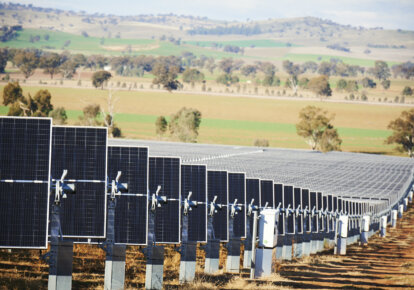On October 31 (2019), we held a webinar on three key factors that determine how retailers set energy rates – term of the contract, timing of contracting and energy profile.
Knowing these three factors can help you avoid rising prices and help you unlock value from your energy contract.
To keep up with Australia’s ever-changing energy market, businesses should look beyond buying energy and focus on managing how they use power.
If you’re looking for a new energy solution, we’ve outlined what you need to know below.
Term of contract matters
When signing an energy contract, how long you sign for and how far in ahead you sign matters. It’s a bit like signing a lease for a building, you often get more favourable prices if you can sign for longer.
This doesn’t mean you need to commit for ten years either. It can be easy as making sure you sign a new contract a year or two out from your current contract ending. Businesses that do this can secure much lower prices than those that leave recontracting to the months or weeks before their current contract ends.
When you sign impacts the price you pay
When you sign influences the prices retailers can offer. This is because the underlying wholesale market prices change constantly, based on the various drivers such as future expectations about the balance between supply and demand.
The energy market can be difficult to predict. You might enter a contract for a certain price, but prices could rise or fall once you’ve signed.
There are options which can minimise timing risk and allow businesses to take advantage of falls in the market, allowing them to unlock value. One example is the Active Option which allows customers to move to a lower rate after contract signature in the event wholesale market prices later fall.
The way you use power matters
How and when you use energy is known as your energy profile. It impacts the prices on your bill and the price a retailer will offer you.
That’s why we use a Price Efficiency Adjustment (PEA) to connect you to the actual peaks and lows in the market. Rather than paying a set peak and off-peak prices that don’t give you the flexibility to make the most of off-peak prices, our PEA lets you benefit from the new low price periods in the market.
Activating potential savings
In FY17, NSW Operations Manager, Larissa was looking for a new energy contract. After learning that rates had increased, she became unsure when the best time to contract was.
Larissa decided on a two-year Power Active contract. By adding an Active Option, Larissa’s contract rate could move with the market if prices dropped. By late May prices for the first year dropped by five percent, securing the business a two percent saving.
Fast forward to FY19, market prices dropped again securing even greater savings of 18 percent. Larissa recontracted for FY20 early, a move which protected the business against a 20 percent price increase.
Q&A
How is the price efficiency factor calculated?
We calculate your Price Efficiency Adjustment (PEA) by dividing your load weighted price by the time weighted price. Your load weighted price is the average price of your business’s energy usage, while the time weighted price is the average spot market price.
What makes Flow Power different from the Australian Energy Market Operator?
We are a retailer, whereas the Australian Energy Market Operator (AEMO) is responsible for the entire market. We essentially participate in that market and we’re a financially responsible participant, putting customers first.
What is the benefit of having a rolling contract?
Hedging well in advance has been shown to deliver an 8-16% saving relative to contracting at the last minute. A rolling contract strategy is the best way to gain these benefits.
When combined with the Active Option, businesses can access lower prices if the market shifts. Ultimately, a rolling contract works best when combined with the Active Option.
Are these prices fixed for the three-year tenor? Do we see any price increases if we signed a three-year contract?
Today, if you signed a three-year agreement, you would probably get better rates than if you signed a single year agreement based on what is happening in the wholesale market.
Under Power Active, the base rate in the agreement, which is subject to your monthly price efficiency factor will be locked in. If you opt for an Active Option and the market price drops significantly, then we would re-baseline your rates to the new lower level. If the market price increases, there is no increase your base rate.
What is the access fee for the Active Option?
An access fee for the Active Option is around half a cent per kilowatt hour.
Does Flow Power offer demand response with Power Active?
Absolutely. We have a whole series of services that our engineering team can provide, from our Market Monitoring Service (MMS) to on-site solar and batteries.
Do you support Power Purchase Agreements (PPAs)?
We are a market leader for PPAs and have delivered over 30 percent of the Corporate PPAs in the market. We also offer businesses the ability to purchase a blend of both wind and solar through our PPAs.
Do Flow Power have an early termination fee?
Contract durations can be taken up from one to three years. Any early termination is subject to contract terms and conditions.
Any questions? We’re here to help.
If you’re interested in learning more about your energy contract, our friendly team are always available for a chat.
If you’re an existing Flow Power customer, please do not hesitate to reach out to your account manager.
If you’re not a Flow Power customer contact our friendly team today:
? 1300 08 06 08 (within business hours)
?️ Live chat message (within business hours via the chat button at the bottom of your screen)
Alternatively, you can submit your questions through our website contact form here.














